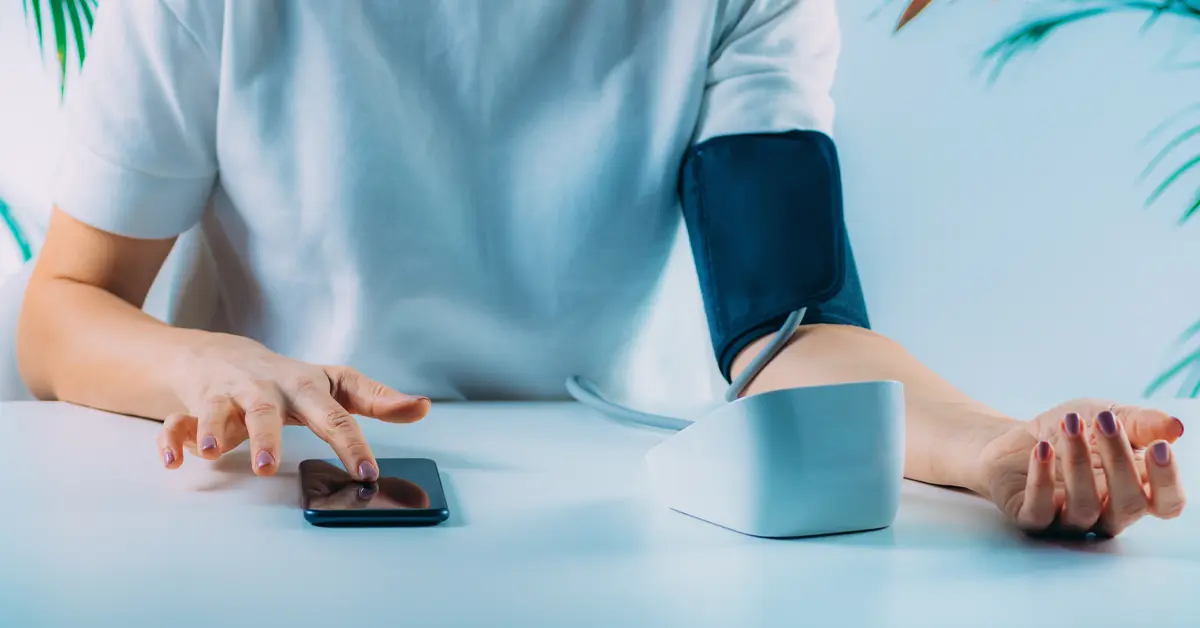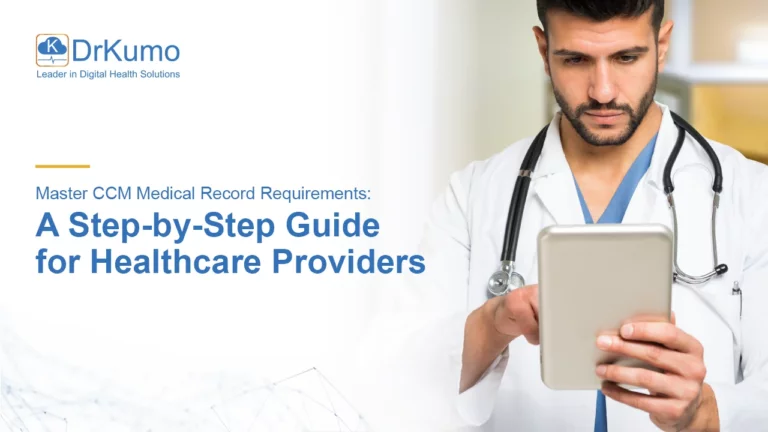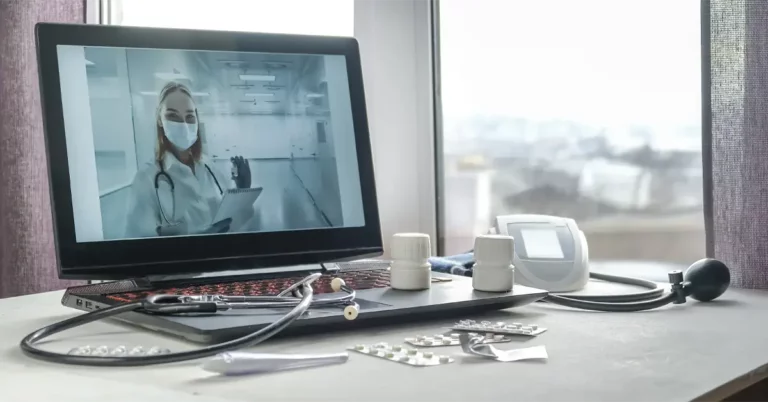As the world becomes increasingly digitized, the healthcare industry is rapidly adopting connected health technology. And for a good reason: it has the potential to improve patient engagement and care, reduce costs and optimize workflow.
Let us talk about connected health’s conceptual model, some popular examples of devices, and their applications in actual clinical practice.
What is the Connected Health Model?
Connected health is a conceptual model for healthcare management that relies on digital technology. This could include anything from wireless devices to electronic medical records for health management.
The goal of connected health is to create a system where all stakeholders can easily share information and communicate seamlessly. Connected health enables us to move away from a reactive, episodic healthcare model and towards a more proactive and preventative model that connects stakeholders across the spectrum of healthcare. Connected health puts the patient at the center of the process and empowers them with the information they need to make informed decisions about their own care.
How Does Connected Health Work?
Connected health is the umbrella term used to encompass the terms of telemedicine, telehealth, and mobile health. The main aspect that sets connected health apart from the other terms is that the technology emphasizes the data and digital communication channels between patients and their providers and other medical professionals.
Medical devices involved in connected health solutions have sensors and use wireless connectivity to collect and transmit patient data, which healthcare providers and patients can access through a secure cloud-based platform or application programming interface (API). This helps bridge the gap between patient and doctor by making it easier for patients to generate and send health-related data and receive care while not having to physically visit a medical facility.
All connected health solutions share common elements: patients, providers, devices, connectivity, and platforms.
Popular Examples of Connected Health Devices
A growing number of connected health devices are on the market and being developed to provide healthcare services remotely. These easy-to-use, Bluetooth-enabled devices help bridge the gap between patient and doctor by making it easier for patients to generate and securely send health-related data. Here are the five most popular examples:
1. Smart Watch Health Monitor
Smartwatches that double as health monitors are growing in popularity. These watches can track heart rate, oxygen level, steps taken, calories burned, sleep quality, and other physiologic signs. This data can be used in both lifestyle and fitness coaching. But now, empowered by DrKumo technology, wearables can also be used for chronic care management: DrKumo has developed the world’s first remote patient monitoring (RPM) application that includes customizable, patient-specific disease management programs (DMP), combined with electrocardiogram (ECG) capabilities, and highly secure communication technology, all encompassed in a single wearable smartwatch. Like with DrKumo’s other devices, the patient data that is measured is visible, at the patient’s discretion, by their provider via the same secure DrKumo wireless connectivity system that is end-to-end encrypted.
2. Glucose Monitors
Glucose monitors are another popular example of connected health devices. They allow patients with diabetes to track their blood sugar levels at any time, even at home or on the road, which can help them improve medication adherence and lifestyle management. The secure, encrypted data is sent to their healthcare providers via DrKumo’s telehealth technology, so they are able to immediately detect any dangerous spikes in blood sugar levels or other health anomalies, and then prescribe the appropriate medication, or modify the patient’s diet and exercise regime, all without the patient ever having to step foot in a doctor’s office.
3. Blood Pressure Monitors
Blood pressure (BP) monitors used in connected health care are often digital, and the entire measurement procedure is nearly automatic. If your BP readings are consistently higher or lower than the average, your doctor will be notified, thanks to connected health system. Many studies support the benefits of using home BP monitoring instead of office-based monitoring. These benefits include improved management of BP, significant reduction of erroneous “white-coat” hypertension diagnosis, and better cardiovascular risk prediction.
4. Digital Weighing Scales
Digital weighing scales used as part of a connected health system brings a whole new meaning to what a scale can do to help a person maintain their health. Beyond just measuring a person’s weight, these smart scales help practitioners remotely monitor crucial changes in a patient’s body mass, providing insights critical for patients with congestive heart failure or weight-related health issues like obesity or rapid weight loss. DrKumo’s smart weight scale can track 12 body composition parameters. These parameters are Body Mass Index (BMI), Body Fat Percentage, Muscle Mass, Body Water, Visceral Fat, Bone Mass, Basal Metabolic Rate (BMR), Protein, Subcutaneous Fat, Standard Weight, Body Weight, and Heart Rate. The quality and quantity of health data these scales capture is invaluable to the patient and provider to help give the patient an unprecedented level of care.
5. Pulse Oximeter
COVID-19 has helped propel pulse oximeters into a popular and useful connected health device. Pulse oximeters conveniently measure peripheral blood oxygen saturation (SpO2) levels. This is important for people with COVID-19 both in hospitals and at-home care because they can help quickly determine whether a person’s health is deteriorating and in need elevated medical care.
Connected Health for Chronic Disease Management
Connected health offers a new way to address chronic disease. Chronic disease is a big challenge because the traditional treatment model is centered on office visits. The traditional model limits access to services based on physician and patient availability.
Connected health technologies for chronic disease management allow physicians and patients with chronic diseases like diabetes, heart disease, COPD, and others to interact and exchange data and information in ways that were not previously possible. Patients can play a far more active role in their own healthcare as they use connected devices and other digital tools to better empower their providers to better be able to monitor their health status and adjust treatment accordingly far more rapidly than ever before.
There are clear benefits of using connected health to treat chronic conditions. Connected health improves physician efficiency using data streaming and algorithm-based analytics. It also improves patient engagement and health outcomes through remote monitoring, as they receive treatment and follow-up without the need to visit their doctor’s office. The result is improved patient care, reduced hospitalizations and readmissions, and better quality of life for patients with chronic diseases.
Connected Health for Health Risk Reduction
Connected health is an existing model of care that allows patients to be treated at home instead of being admitted to a hospital for longer periods of time. It’s been found that several advantages are associated with connected health monitoring from a patient’s home, ranging from cost savings to health risk reduction.
Connected health technologies allow providers to monitor patients remotely, which can help identify problems before they become health emergencies. This reduces the need for hospital visits and allows providers to better understand a patient’s health risks. Thanks to connected health solutions, high-risk patients can obtain the care they need without sacrificing their quality of life.
A key to effective connected health is using secure communication technology combined with Artificial Intelligence (AI). With the massive amount of data generated by patients and providers, AI is becoming an increasingly important tool for delivering faster, more accurate diagnoses. By comparing individual patient data to aggregate data sets, AI can deliver fast, optimized treatment plans that result in better outcomes.
DrKumo Connected Health Technology
DrKumo, the leader of Connected Health, provides real-time and continuous remote patient monitoring (RPM) for patients with chronic and acute diseases, hospital-at-home programs, disease management programs, and clinical trials.
DrKumo’s advanced monitoring programs are equipped with easy-to-use wearables and home medical devices such as blood pressure monitors, pulse oximeters, smart weight scales, and smartwatches. Patients can take measurements wherever they are and transmit health information to their providers via a cyber-secure cloud-based platform. Their doctors can track their data in real time and provide faster and more accurate medical intervention whenever necessary.
DrKumo solves the most painful problems in healthcare by bridging the gaps between patients and their providers. Its state-of-the-art technology-enabled care connects all stakeholders by efficiently and securely sharing vital health information through connected health devices and services.
Takeaway
In the world of Connected Health, one thing is for sure: technology has the potential to revolutionize the way we care for patients and it is doing so today with Connected Health.
The benefits of connected health are clear, but it’s up to healthcare professionals to make this a reality throughout the healthcare system. By embracing digital health technologies, healthcare professionals can provide better patient care and help reduce the risk of health complications.
Contact us to learn how to incorporate Connected Health Technology into your practice.








